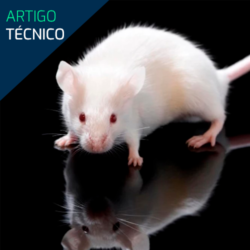[vc_row full_width=”stretch_row_content_no_spaces” css=”.vc_custom_1624917451515{padding-top: 300px !important;padding-bottom: 220px !important;background: #a3a3a3 url(https://steq.com.br/wp-content/uploads/2021/06/ast_1.jpg?id=5722) !important;}”][vc_column][vc_column_text]
Aseptic filling: why is Robotics advantageous?
[/vc_column_text][vc_separator color=”sandy_brown” border_width=”3″ el_width=”10″][/vc_column][/vc_row][vc_row css=”.vc_custom_1564073259210{margin-top: 25px !important;margin-bottom: 25px !important;}”][vc_column width=”3/4″][vc_column_text css=”.vc_custom_1661444932808{padding-bottom: 20px !important;}”]The role of robotics in aseptic vaccine packaging
Vaccine development can be complex, risky, and expensive. With many vaccine candidates failing in preclinical or early clinical development, bringing a vaccine to market requires the implementation of consistent processes, reliable systems, and highly skilled teams. Not only is this drastically changing the pipeline for many companies, but it’s also leading to the manufacture of larger batch sizes and more frequent format changeovers, profoundly impacting how drugs are produced. Manufacturers are looking for solutions to optimize operations to improve efficiency and reduce costs by improving the quality of the final product.
Why is Robotics advantageous?
Reason #1 – Product Safety Failures during the aseptic fill closure process can result in lost batches due to drug contamination or degradation, putting a drug’s efficacy and safety at risk. Small and emerging companies that already face a pressure on capital often cannot afford these costly product losses during manufacturing or the inevitable delays that occur when a problem is discovered and investigated. In addition to cost, product losses threaten the ability to meet supply needs. Drug shortages can delay clinical trials, preventing products from reaching the market on schedule. A filling machine with robotic technology removes all risks of contamination by minimizing human interaction, reducing product losses and waste. Reason #2 – Flexibility Traditional production lines utilize multiple actuators in a complex arrangement because they are designed for maximum throughput. On the other hand, robotic production lines are designed for maximum flexibility while maintaining relatively high aseptic processing rates. Changing products in traditional systems can take one to two days to complete, which is especially burdensome due to the unlimited number of configurations required to accommodate the wide range of specialized formats available today. In addition, traditional systems fill vials in a single line, requiring significant cleanroom space. A single robot can traverse a 3D space that would otherwise require many mechanical parts, allowing many jobs to be performed at once, moving to the different process stations instead of filling containers in-line. This results in significant space savings and makes it much simpler to install a new robotic system in an existing facility. Reason #3 – Significant increase in production Robot production lines meet the needs of a changing landscape while providing maximum flexibility. A single machine can reliably produce many different products with minimal changeover time between batches. Using fewer parts, the exchange of robotic systems is clean and low-risk. Changeover is further simplified by recipe-driven programming, minimizing required parts and leaving less room for human error. Instead of requiring physical adjustments and tooling changes, recipes on robotic production lines can be selected and edited in the HMI and automatically guided by advanced vision systems. In addition, these features make introducing new vial formats into an existing production facility much cheaper. Robotic production lines allow new formats to be added to the machine quickly and easily, without the need for significant mechanical changes. Reason #4 – Lower risks Because robotic production lines require a significantly lower total number of parts than traditional lines and are largely recipe-driven, they are cleaner and have lower risks.
The capabilities of a robotics production line also reduce the chance of operator setup and cleanup errors, which can cost the manufacturer an entire batch. Maintenance is simpler due to the fewer parts and, if done correctly, can result in a significantly longer service life than traditional line mechanical components. While robots in the past were not suitable for an aseptic environment, advances in the design of today’s robots make robotic production lines a reliable and clean alternative. All parts of the robot are compatible with an aseptic environment and certified for use in operations in these environments. By installing a robotic production line, manufacturers can adopt an area that is significantly smaller than a traditional production line, reducing both the initial investment in cleanroom floor space and operating costs in the future. A simpler line means replacing fewer consumables, simpler maintenance, lower energy consumption, and faster qualification and cleaning. Reason #5 – Maintenance Robotic systems simplify maintenance through self-monitoring and the use of programmed alarms to alert operators of any issues. These alarms appear on the HMI, signaling to operators exactly what went wrong. When necessary, diagnosis and repair service can be performed remotely, eliminating the cost and time required to travel a team to the site. This type of intervention is possible thanks to the simplified assembly of robotic production lines, which use fewer mechanical parts than traditional filling lines. Reason #6 – Implementing Robotics The first step in implementing a robotic system is to identify the goals of your production line. Is it a new drug or an existing drug that now needs to be managed differently? There are several models of equipment for production lines with various levels of automation to accommodate a wide range of customer needs throughout the life of a drug, including the development stages, clinical trials, and large-scale production.
Conclusion
As you prepare for a future that presents great opportunities and challenges, flexibility is the antidote to uncertainty. Consider utilizing a robotic solution that can be quickly implemented in your facility and can easily accommodate any changes the market drives. These solutions give you the flexibility you need to adjust to future growth and the speed you need to succeed in the ever-changing industry. [/vc_column_text][vc_column_text css=”.vc_custom_1607348057252{padding-bottom: 20px !important;}”]
For more information about AST’s complete line of filling machines, please contact us at contato@steq.com.br.
[/vc_column_text][/vc_column][vc_column width=”1/4″][vc_basic_grid post_type=”post” max_items=”3″ element_width=”12″ gap=”15″ item=”958″ grid_id=”vc_gid:1661444822300-2c458f73-4f3e-9″ taxonomies=”4, 1, 5, 3″][/vc_column][/vc_row]




